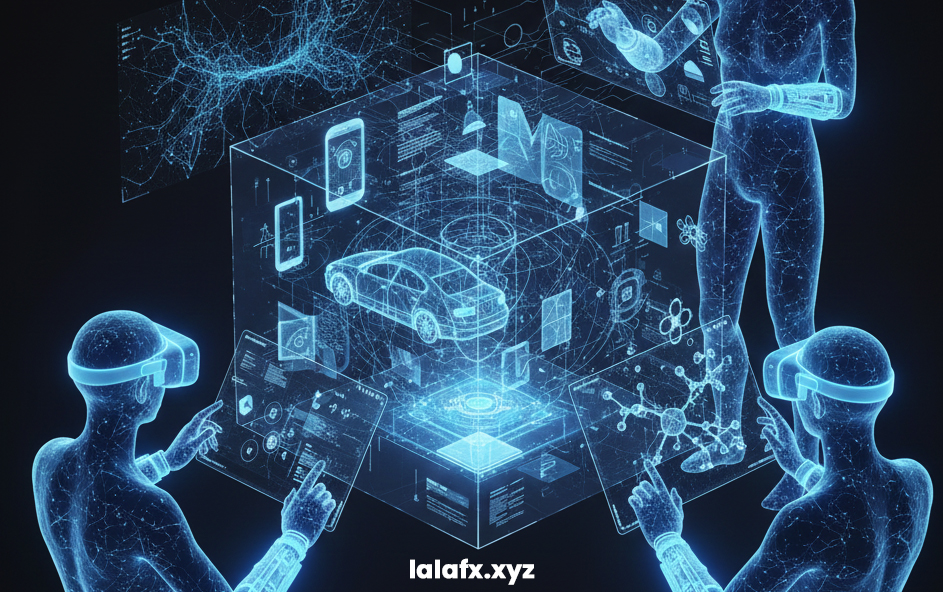One in three product builders are releasing AI-powered products this year
A 50% increase from the previous year according to Figmas 2025 AI Report. What drew my attention though is that 52% of AI builders believe that design is more crucial for AI-powered products than for conventional ones. Were improving design rather than merely automating it.
Your Design Toolkits Unseen Revolution
A more intriguing development occurred while everyone was discussing whether AI would replace designers: it began to greatly increase their productivity.top AI tools The tools that surfaced in 2025 have completely transformed how product teams collaborate they do more than just produce aesthetically pleasing images.
Consider what transpired in May during Figmas Config 2025 conference.
Figma Make was the most notable of the four major product launches not because of its technical capabilities but rather because of the way it blurred the lines between roles.
All of a sudden engineers could rapidly visualize intricate interactions product managers could produce working prototypes and designers could test concepts that would have taken weeks to implement.
Five categories are revolutionizing everything in the New Essential Toolkit
First. Research Synthesis with Intelligence
The Issue:
In the past user research was a bottleneck. Sporadic feedback hours of interview transcripts and the never-ending quest for patterns in qualitative data.
The Solution:
Research analysis labor is being automated by programs like Maze AI and Dovetails Magic Suite. Key moments in user interviews are automatically highlighted by Dovetails Magic Highlight and feedback is automatically grouped into themes by Magic Cluster. Maze AI goes one step further by identifying bias in research questions and producing pertinent follow-ups in real-time interviews.
Two. Generators that are ready to prototype
The Game Changer:
Anyone can now create interactive prototypes from straightforward text descriptions thanks to Figma Make which has transitioned from beta to top AI tools general availability. But its about exploration as much as speed. Teams test more ideas when it becomes almost free to do so.
Designer Perspective:
Gui Seiz Design Director at Figma states that designers engineers and product managers can all make high-fidelity artifacts to bring to the team for a more informed discussion. . Its a change in perspective that motivates you to experiment take chances and develop more intriguing solutions.
Visual Generation Aware of Context

While Midjourney produces stunning images programs like Photorooms new AI suite and Adobe Firefly are made especially for product work. Fireflys direct integration with Photoshop and Illustrator allows for quick iterations on visual assets and UI elements. Launched in April 2025 Photorooms Product Beautifier automatically enhances product images for online sales without the need for photographic knowledge.
Intelligent design and responsive layout
The Technical Innovation:
AI is used by Figmas new Grid feature top AI tools to produce responsive layouts that automatically produce clean CSS code for developers. Making designs that translate smoothly to code is more important than just making things look good.
A workable structure
Heres a useful strategy for incorporating AI into your design workflow.
First. Accelerated Research Phase.
For trend analysis and competitive research utilize Perplexity. Set up Notion AI for user interview summaries and meeting notes. Use Dovetail or Maze AI to synthesize research.
Two. Quick prototyping.
For more organized brainstorming sessions try using Miro AI. Try using Figma Make for rapid concept validation and testing. Custom visual assets can be created with Adobe Firefly.
Third. The bridge between design and development.
Use Figmas Grid for responsive layouts or UXPin Merge. For unique interactions and micro-animations utilize GitHub Copilot. Configure automated handoff procedures using documentation produced by AI.
The Future Is Here Already
In 2025 product teams with the largest budgets and the most skilled designers may not be the most successful. They are the ones who have mastered the use of AI tools to shorten the feedback loop from concept to implementation.
AI has already changed product design the question is not whether it will continue to do so. Whether your team will be among the first to profit from this change or among the last to adjust is the question.
FAQs
Q1: Why are AI apparatuses getting to be basic for item creators in 2025?
AI instruments presently robotize investigate, speed up prototyping, and disentangle workflows. Instep of doing tedious assignments physically, creators can center on inventiveness and problem-solving whereas AI handles the overwhelming lifting.
Q2: How do instruments like Figma Make offer assistance groups work faster?
Figma Make permits anyone designers, engineers, or item managers to turn content portrayals into intelligently models. This diminishes weeks of exertion into minutes and energizes more experimentation.
Q3: What makes inquire about instruments like Labyrinth AI or Dovetail useful?
They consequently analyze interviews, highlight imperative minutes, distinguish designs, and indeed recognize predisposition. This turns inquire about from a moderate bottleneck into a quick, clear, and organized workflow.
Q4: Do AI visual instruments supplant designers?
No. Devices like Adobe Firefly or Photoroom upgrade originator yield, but imagination, heading, and decision making still come from people. AI basically evacuates the tedious work so originators can center on superior ideas.
Q5: How can item groups get the most esteem from AI?
By treating AI as a accomplice over the whole workflow research, prototyping, visuals, responsiveness, and improvement handoff. Groups that combine human imagination with AI speed see the greatest gains.
Conclusion
AI instruments are changing item plan in 2025 not by supplanting originators, but by increasing what they can accomplish. Investigate that once took days can presently be synthesized in minutes. Models that required entire groups can be produced from basic content. Visuals, formats, and engineer handoff are all getting to be smoother and quicker.
